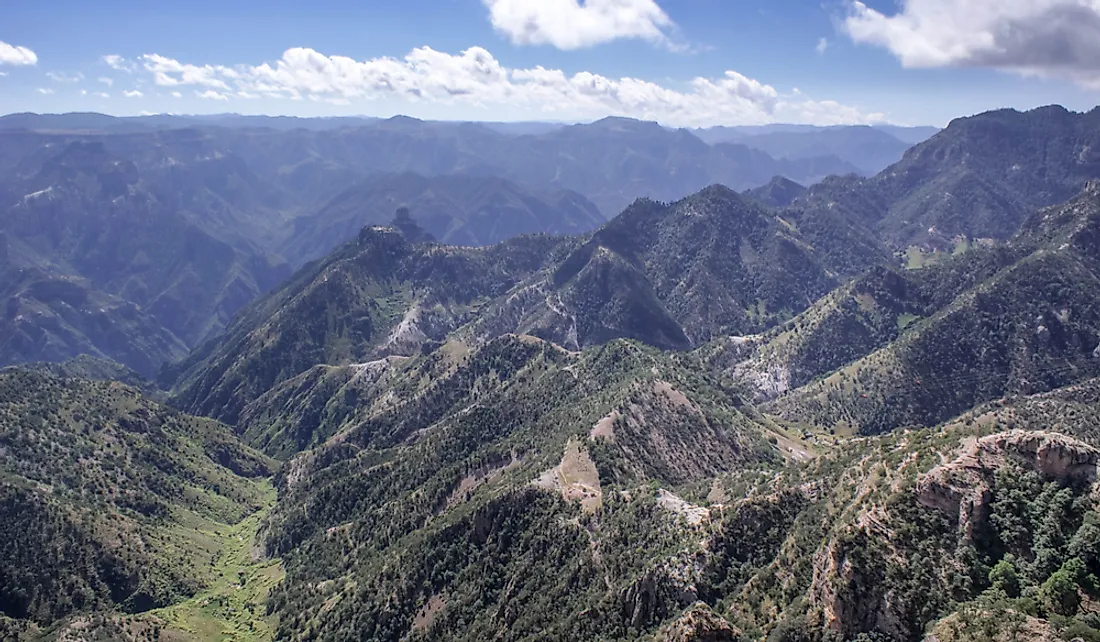Where Is The Sierra Madre Occidental?

The Sierra Madre Occidental is a series of mountains in the North American Cordillera running northwest to southeast through western and northwestern Mexico and along the Gulf of California. This mountain range system is also part of the America Cordillera, a mountain range system consisting of an uninterrupted sequence of mountain ranges forming the western backbone of West Antarctica, North, Central, and South America. Sierra Madre is a Spanish name for “Mother Mountains” and occidental is also a Spanish word for “western.” Thus, Sierra Madre Occidental means “Western Mother Mountains.” To the east of Sierra Madre Occidental is the Sierra Madre Oriental (Eastern Mother Mountains) running generally parallel to it along the Gulf of Mexico and eastern Mexico.
Geography
The Sierra Madre Occidental extends from northern Sinoro near the United States-Mexico border towards the southeast to the Sierra Madre del Sur range and the Trans-Mexican Volcanic Belt. The mountain range forms a high plateau that is mainly cut by the deep river valley. The region of Sierra Madre from the Durango border northwards is known as Sierra Tarahumara. This region has a dramatic landscape consisting of steep mountains that have been formed by a high plateau cut through by canyons such as the Copper Canyon. The high plateau is approximately 7,380 feet. The highest elevation of the Sierra Madre Occidental occurs in the Tarahumara Range although the precise elevation of the highest peak is not accurately known. The highest elevation is probably Cerro Mohinora, estimated to be approximately 9,970 feet and may go up to 10,800 feet. Cerro Barajas is also thought to be the highest at 10,400-10,800 feet. The southern end of the mountain range may be referred to as “Sierra Huichola.”
Climate
The climate of the mountain range varies significantly between its northern and southern extents. The seasonal variations are as a result of the large, warm water bodies that deliver warm damp air from each side of the range. The region experiences two wet seasons and two dry seasons every year. The change of air pressure in northwestern Mexico and the southwest US is considered the major cause of seasonal variation. The mountain has a mild climate with summer temperatures maintained at constant levels. Maximum temperatures are experienced around July at about 31° Celsius. Precipitation also varies with the annual differences associated with El Nino-Southern Oscillation.
Ecology
The Sierra Madre Occidental creates different sets of condition that are favorable for a wide variety of flora and fauna. The pine-oak forests found at an elevation of approximately 4,900 to 9,800 feet throughout the range has high biodiversity and endemism. The dominant plant species vary across the range, varying from scattered woodland to coniferous and deciduous forests. These dominant plants are determined by latitude and elevation in the range. Oaks grow down to about 3,300 feet while pines grow at higher elevations. At higher elevations in the north, mixed conifer forest is the dominant ecosystem. The mountain range is also a corridor for animal species, allowing for great diversity. Several omnivores and carnivores are native to the region including Mexican wolf, black bear, Mexican grizzly bear, jaguar, mountain lion, white-tailed deer, mule deer, Mexican fox squirrel, rock squirrel, and ring-tailed cat.











